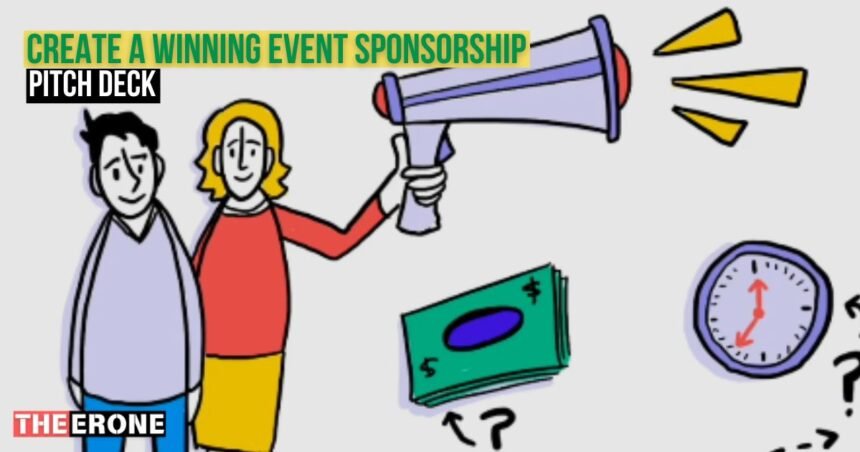Creating a winning event sponsorship pitch deck starts with understanding your audience’s needs. Focus on showcasing clear benefits and value for potential sponsors. Highlight the event’s purpose, audience demographics, and key opportunities for sponsor engagement.
To keep their attention, use visually appealing slides featuring concise, compelling content. Include stats, success stories, and unique sponsorship packages tailored to their goals. Make your pitch actionable by emphasizing how partnering with your event boosts their brand and visibility.
End with a strong call to action and ensure your contact details are precise. A well-crafted pitch deck can secure the support you need to make your event successful.
Understanding the Needs of Event Sponsors
Event sponsors want partnerships that meet their goals and create value for their brand. They often seek visibility and branding opportunities through your event’s audience and exposure. Sponsors value clear metrics to measure their return on investment (ROI) from the partnership.
Your event must align with its target audience and brand values. Understanding what sponsors seek helps you create tailored proposals that meet their needs.
Researching Potential Sponsors
Finding the right sponsors starts with identifying companies that match your event’s purpose. Use tools like surveys and industry reports to learn about potential sponsor goals. Researching their past sponsorships can show how they align with events like yours.
Explore their website, social media, and press releases for their priorities. Speak directly with their team to better understand what they value most. This preparation helps you craft relevant and appealing sponsorship proposals.
Components of a Winning Event Sponsorship Pitch Deck
Creating a winning event sponsorship pitch deck requires each section to provide value and clarity. Below is a breakdown of the essential sections:
Title Slide
Start your deck with a professional title slide that instantly grabs the sponsor’s attention. Include the event name, logo, and a short and memorable tagline. Use a visually appealing background image that relates to your event theme. This sets the tone and highlights the event’s professionalism right from the start.
Event Overview
Please provide a short but clear description of your event, including its theme, purpose, and background. Share essential details such as the event date, location, and expected number of attendees. Highlight unique aspects of your event that stand out, like special performances, keynote speakers, or community impact.
Audience Insights
Show sponsors precisely who the audience is by breaking down demographics like age, gender, and location. Include psychographics about your audience’s preferences, buying habits, and engagement trends. Use simple visuals like pie charts or graphs to quickly understand and emphasize key statistics.
Sponsorship Benefits
List the benefits that sponsors will get by supporting your event. Examples include branding exposure on banners, mentions on social media, and inclusion in event marketing. Offer additional opportunities for sponsors, such as exclusive networking events or product showcases. Including real-life examples or past testimonials adds credibility.
Sponsorship Tiers
Provide multiple sponsorship packages, such as Gold, Silver, and Bronze, with clearly outlined benefits for each. Explain the pricing and benefits clearly and attractively to sponsors. Allow room for custom sponsorship options to give flexibility to potential partners.
Marketing and Promotion Plan
Explain how you will promote the event and highlight sponsors’ involvement in marketing ideas and materials. Share your social media strategy, email campaigns, and partnerships with influencers or media outlets. This plan shows sponsors how their brand will get maximum visibility.
ROI Metrics and Data
Tell sponsors how you will track and share the performance of their investment. Metrics like impressions, audience reach, engagement, and conversion rates should be included here. Use tools like Google Analytics or unique QR codes to measure results. To establish credibility, include case studies or comments from previous sponsors.
Call-to-Action (CTA)
End your pitch deck by clearly outlining the steps sponsors need to take next. Tell them how to contact you, share their decision deadlines, and include links to more information. Offering this information ensures they have everything needed to proceed quickly.
This structure keeps your pitch deck user-friendly, highly visual, and effectively focused on meeting sponsor needs.
Tips for Designing a Professional Pitch Deck

Keep it Visual
Use high-quality images, branded colors, and professional fonts to create a polished look. Include charts, graphs, and infographics to make data easier to read and enjoyable. Ensure images and visuals relate directly to your event or sponsorship proposal. A strong visual design catches attention and keeps sponsors interested. Avoid clutter by spacing elements well and using consistent styles across slides.
Limit Text
Limit your content to brief words and bullet points to make your slides easy to read. Use simple language that communicates your ideas clearly and effectively.
Avoid long paragraphs that might overwhelm or bore potential sponsors. Summarize key facts and keep only essential information on each slide. Remember, less is more when designing a visually appealing pitch deck.
Use Storytelling
Develop a narrative that emotionally connects sponsors to your mission and audience. Highlight the purpose of your event and why their partnership is valuable. Share stories or examples that emphasize the positive impact their contribution can make. Stories help build trust and make your proposal more memorable to sponsors. A well-crafted story can inspire sponsors to act quickly.
Common Mistakes to Avoid
Overloading Slides with Text
Too much text can overwhelm sponsors and distract them from your main points. Minimize clutter by focusing only on key messages and removing unnecessary information.
Lack of Focus on Sponsor Benefits
Focus on what sponsors gain, not just event details, to keep their attention. Sponsors care about visibility, engagement, and value, so make their benefits crystal clear.
Ignoring ROI Metrics
Include measurable outcomes like reach, impressions, or audience engagement to prove your event’s impact. Sponsors need data to justify their investment, so always show clear metrics.
Using Generic Messaging
Tailor your message to each sponsor’s goals, values, and target audience. A personalized and relevant pitch increases your chances of securing sponsorship.
Real-Life Examples of Successful Sponsorship Pitch Decks
Learning from the best can provide inspiration. Here are a couple of examples to analyze:
1. Sports Tournaments
Events like marathons often highlight the number of attendees and brand visibility through on-venue banners and social media mentions.
2. International Conferences
They showcase sponsorship tiers like presenting sponsor, session sponsor, or swag bag contributor to give sponsors flexibility.
What made these pitch decks successful? A substantial audience alignment, powerful visuals, and clear measurability.
Tools and Resources for Creating a Pitch Deck
Creating a pitch deck needs the right tools to make an impact. Presentation tools like PowerPoint, Canva, Google Slides, or Prezi make designing easy and effective. These platforms provide user-friendly functions and creative design options for any experience level.
Graphic design tools like Adobe Spark, Figma, or Visme are great for custom visuals. They help make your pitch deck more professional and visually appealing.
For ease of use, explore online platforms to find customizable templates for sponsorship pitch decks. Websites like Canva, Envato Elements, or Template.net offer high-quality designs that save time. These tools and resources ensure your pitch deck looks polished and grabs attention.
Conclusion
Creating a winning sponsorship pitch deck requires careful planning and attention to detail. Choose attractive and clear designs to keep your audience interested. Remember to include key sections such as your mission, audience insights, and sponsorship benefits.
Please focus on the sponsor’s perspective to highlight what they will gain from partnering with you. Use tools like Canva or Adobe Spark to make your deck professional and easy to read. Pick customizable templates to save time and maintain a polished look.
Constantly tailor your pitch to match the sponsor’s needs and interests. Keep your tone professional yet friendly and approachable throughout the presentation. Compelling storytelling can make sponsors feel more connected to your goals.
Start small by planning the structure one section at a time. Most importantly, take action now, and don’t wait to share your ideas. Start creating your pitch deck today to secure the sponsors you need!
FAQs
How to make a pitch deck for sponsorship?
Start by outlining your goals and understanding your audience’s needs. Use simple, visually appealing slides to explain your mission and benefits. Include audience insights, sponsorship benefits, and call-to-action in the pitch deck.
How do you write a winning sponsorship proposal?
Focus on how the sponsor will benefit from partnering with you. Use clear, persuasive language and include real examples of success. Highlight your audience reach and align your goals with the sponsor’s mission.
What should be the ideal length of a sponsorship pitch deck?
The ideal length is around 10-15 slides to keep it concise and engaging. Include only necessary and impactful details while avoiding overwhelming information. Focus on quality over quantity to hold the sponsor’s attention.
How do I approach sponsors after creating the pitch deck?
Contact sponsors through personalized emails or professional networking platforms like LinkedIn. Clearly explain how the partnership benefits them and offer to schedule a call. Stay polite, follow up if needed, and show enthusiasm for collaboration.
Should I include a sponsorship agreement in the pitch deck?
It’s better to keep agreements as separate documents for later discussions. The pitch deck is meant to showcase value and create interest. Present the agreement once the sponsor shows genuine interest.












